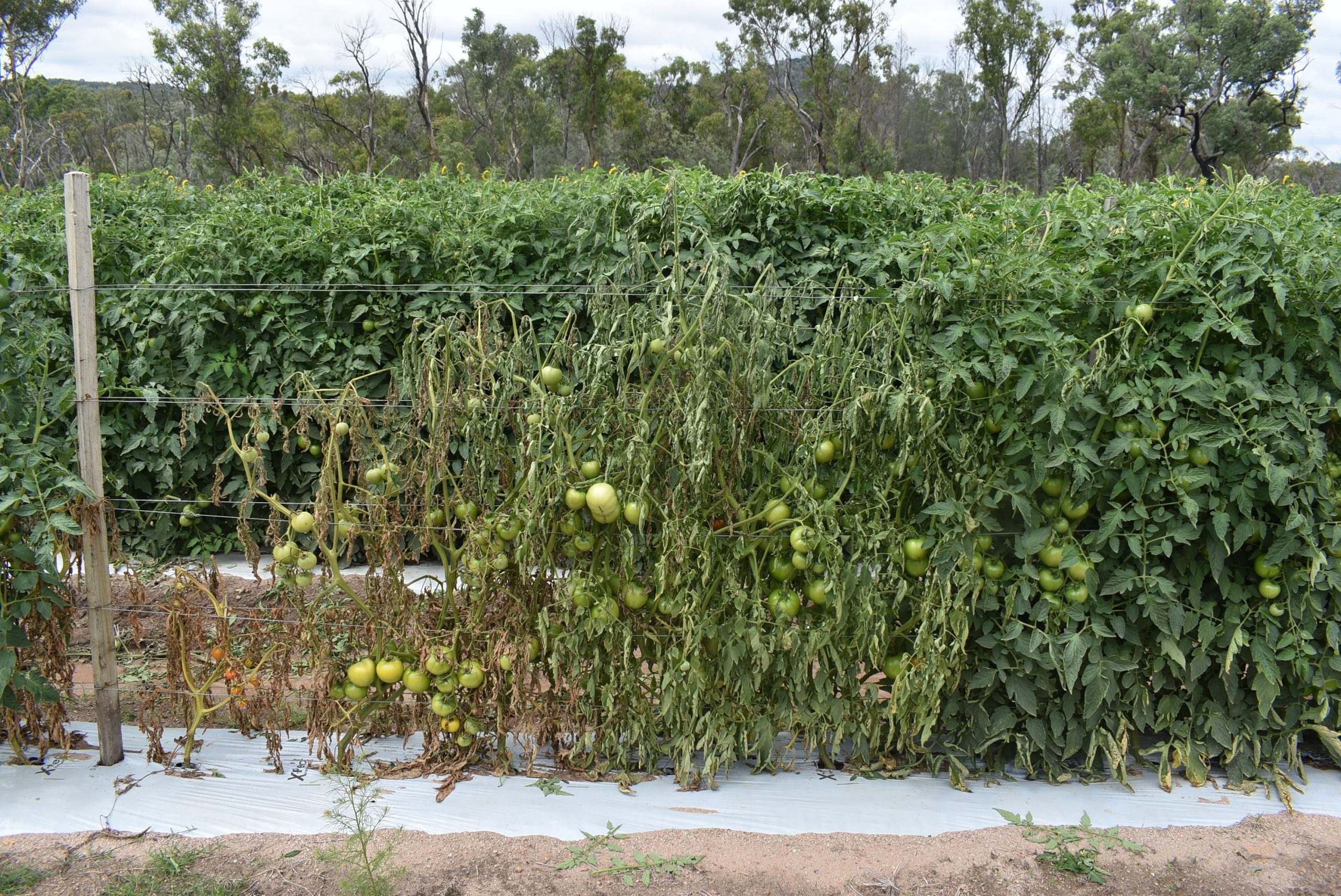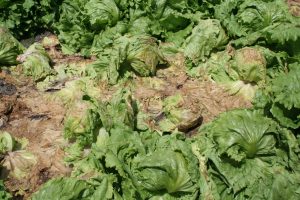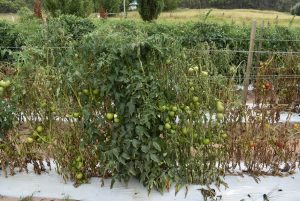
Vegenotes 85: Vegetable Strategic Agrichemical Review Process (SARP)
26 May 2022
Hort Connections 2022 – a tremendous success
8 June 2022How well do you know vegetable diseases? In this edition of The Front Line, join AUSVEG Biosecurity Officer Zali Mahony as she learns how to improve her disease recognition skills.
Vegetable diseases can be difficult to spot as they can look almost identical to plant disorders such as abiotic stress, nutrient imbalance, herbicide damage, poor light, and water logging.
Signs and symptoms can be used to spot the difference between plant diseases and plant disorders.
A ‘sign’ is the physical aspect of what causes a disease. Signs differ depending on whether a plant is infected with a virus, bacteria or a fungus.
This can be the white powder on the back of a pumpkin leaf, which is the spores of the fungus that causes powdery mildew. Or it might be galls on roots from infection by nematodes or insects that spread viruses and bacteria, which can cause disease.
A ‘symptom’ is the physical outcome from the pathogen infecting the plant. Symptoms differ depending on whether a plant is infected with a virus, bacteria or a fungus.
This can include mottling, yellowing (chlorosis), curling of leaves, fruit distortion, wilting, rotting, dead cells (necrosis), tumours, leaf spots and lesions.
Image A – Virus (Cucumber Green Mottle Mosaic Virus)
Image A shows a zucchini plant infected with Cucumber Green Mottle Mosaic Virus (CGMMV), a virus known for causing significant damage to the cucurbit family.
Without doing any diagnostics, what signs and symptoms tell us that it is a virus infection?
The mottled, mosaic leaf pattern and leaf rolling are the two biggest indicators that this plant is infected with a virus.
Image B – Fungus (Sclerotinia species)
Image B shows iceberg lettuce infected with a fungus called Sclerotinia. This fungus is spread through air and wind when conditions are favourable.
But how do we know it is a fungus that is impacting this iceberg lettuce crop?
These plants are suffering from wilt and plant collapse, which can be indicative of infection by a fungus. Often there are signs of the Sclerotinia fungus at the base of the lettuce, fluffy grey or white material and hard, dark spores can be present.
Image C – Bacteria (Ralstonia species)
Image C shows a tomato plant infected with a bacteria called Ralstonia. Bacteria infects plants via natural openings on plants or via mechanical wounds, often aided by free water.
But what signs and symptoms tell us that it is a bacterial infection?
The plant is most notably experiencing vascular wilt, meaning its ability to transport water from roots to leaves is being impacted. This is often telltale sign that a plant is infected by a bacterium – although fungi can also cause stem wilts on plants.
Pathogen identification
Diagnosing plants in-field without molecular diagnostics can be incredibly difficult as there many signs and symptoms that can occur when plants are infected by different pathogens.
Australia is free from many pests and diseases that plague the rest of the world. This absence – and our ability to prove it – allows Australian growers access to markets all over the world. Plant diagnostics are incredibly important and provide strong scientific evidence that our growing regions are free from certain pests and diseases.
If you are unsure of signs and symptoms of a pest or disease that you’re seeing in a crop, then modern, quick and accurate diagnostics can ensure good crop management and help you stay on top of good farm hygiene practices and prevent incursions.
Area wide management
A multi-million-dollar project responsible for developing an ‘area wide management’ strategy commenced in 2018 to address high-priority viral and bacterial diseases affecting vegetable crops.
This strategy included viral diseases transmitted by thrips, aphid and whitefly pests, and phytoplasmas transmitted by leafhoppers, and involved pest management approaches.
The second major focus of the project was on managing foliar bacterial diseases and work also involved developing rapid diagnostic test for key bacterial and viral pathogens.
Area Wide Management of Vegetable Diseases: viruses and bacteria (VG16086) is a strategic levy investment under the Hort Innovation Vegetable Fund, and is set to be completed in May 2022.
For further details about the project, please contact Dr Cherie Gambley from the Queensland Department of Agriculture and Fisheries on 0423 200 211 or email cherie.gambley@daf.qld.gov.au.
Find out more
Please contact AUSVEG on 03 9882 0277 or email science@ausveg.com.au.
Cover image: Bacterial wilt in a tomato crop. Image courtesy of Dr Cherie Gambley from the Queensland Department of Agriculture and Fisheries.




